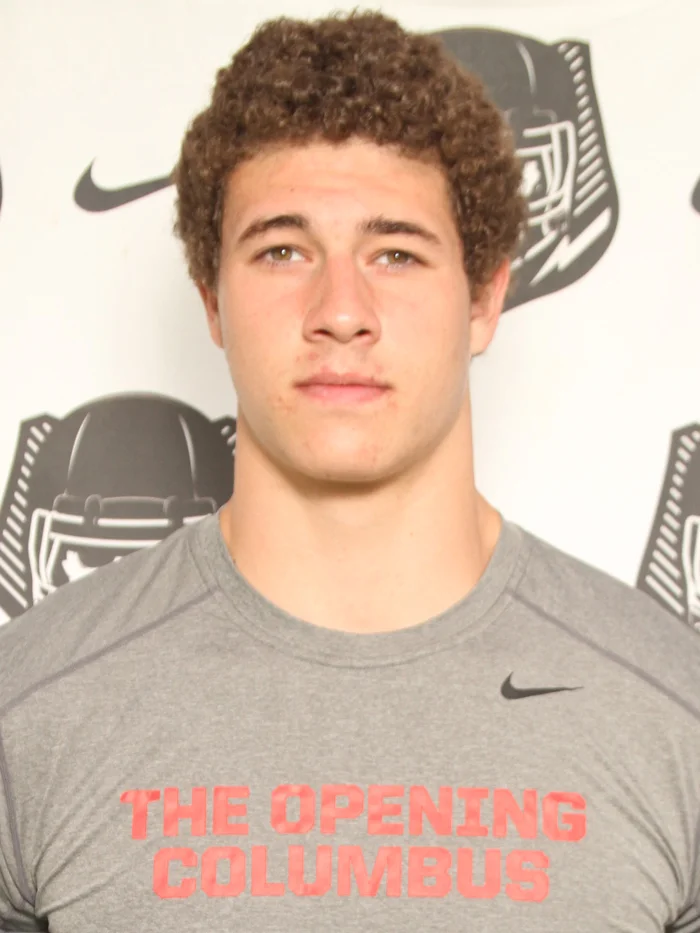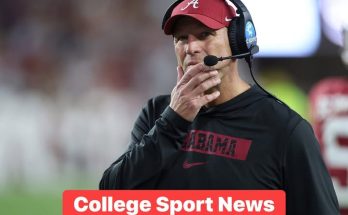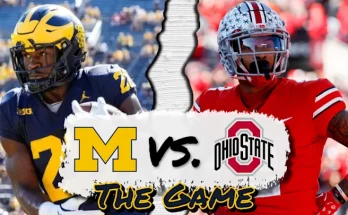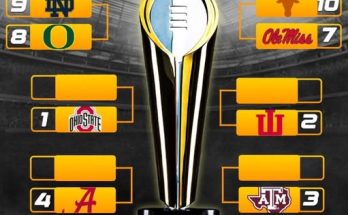The college football recruiting landscape is never static, but some decisions shock the community more than others. One of the biggest surprises in recent memory is the sudden decommitment and flip of top-ranked 2026 wide receiver Joey O’Brien to the Miami Hurricanes, leaving behind powerhouse programs like Alabama, Ohio State, and Nebraska. This move has sent ripples across college football and raised questions about what led a highly sought-after recruit to pivot his commitment in such a dramatic fashion.
Joey O’Brien, widely regarded as one of the premier wide receiver prospects in the 2026 recruiting class, was initially committed to Alabama, a program synonymous with elite recruiting and national championships. His decision to back out of that pledge and instead join Miami, a program eager to regain national prominence, represents a major coup for the Hurricanes’ coaching staff and an unexpected setback for the Crimson Tide, the Buckeyes, and the Cornhuskers. To understand the full weight of this move, it is essential to dive into O’Brien’s recruiting journey, his profile as a player, and what this decision means for all parties involved.
O’Brien’s journey began in high school with remarkable success that quickly put him on the national radar. At his high school in Florida, he displayed a rare combination of size, speed, and technical skill that distinguished him from his peers. Standing around 6-foot-3 with a fluid running style, O’Brien caught the attention of scouts and analysts early, showing the ability to make contested catches, run crisp routes, and break away from defenders with ease. His junior year stats were eye-popping, with over 1,200 receiving yards and 15 touchdowns, solidifying his status as a top target for the nation’s best programs.
As the recruiting process unfolded, O’Brien quickly accumulated offers from a range of elite programs. Alabama, Ohio State, and Nebraska emerged as frontrunners, each offering distinct advantages. Alabama’s reputation for developing NFL-caliber wide receivers and competing annually for national titles made it a natural fit. Ohio State’s balanced offense and tradition of producing elite skill position players also made the Buckeyes an appealing destination. Nebraska, while not always considered a blue blood in recent years, offered the chance to be a cornerstone player who could help revive the program to national relevance.
Initially, O’Brien committed to Alabama in a public announcement that thrilled Tide fans and recruiting analysts alike. The Crimson Tide’s head coach, known for his skill in cultivating top wide receiver talent, personally reached out to O’Brien and his family, assuring them of the developmental opportunities at Alabama. The recruiting staff’s emphasis on their cutting-edge facilities, championship culture, and NFL pipeline helped seal the initial pledge.
However, as the months passed, Miami began aggressively courting O’Brien. The Hurricanes’ coaching staff, led by a head coach with deep ties to Florida and a reputation for connecting with young players on a personal level, launched a sustained recruiting campaign. Miami’s vision for O’Brien was clear: he would be an immediate impact player and a centerpiece of their aerial attack for years to come. The coaching staff showed him how he would fit into their offensive scheme, highlighting opportunities to showcase his talents in a pass-heavy system designed to create mismatches.
Moreover, Miami’s recruiting pitch included not only football but also academics, culture, and the appeal of living and playing in South Florida. For a Florida native, the idea of playing close to home, in front of family and friends, and contributing to the resurgence of a proud program that once dominated college football held undeniable allure.
Sources close to O’Brien’s camp indicated that the decision to flip was not taken lightly. His family and advisors carefully weighed the pros and cons, considering development, playing time, coaching relationships, and long-term goals. While Alabama’s and Ohio State’s programs remain among the best in the nation, concerns arose about crowded wide receiver rooms and the potential for being just one of many highly talented players competing for limited opportunities early on. Nebraska’s position offered a different challenge, as the program is still in rebuilding mode and lacks the consistent national visibility that Miami or Alabama enjoy.
O’Brien’s flip to Miami has major implications. For the Hurricanes, landing a top 10 nationally ranked wide receiver in the 2026 class bolsters an already talented recruiting haul. Miami’s offense, known for explosive plays and a high tempo, will benefit tremendously from a receiver of O’Brien’s caliber. The commitment also signals to other elite recruits that Miami is once again a destination program capable of competing for championships and developing NFL talent.
For Alabama and Ohio State, the loss of O’Brien is a reminder that recruiting battles are never guaranteed, even for established blue bloods. Both programs will need to continue to recruit aggressively to fill the void left by O’Brien’s departure. It is a competitive reminder that prospects today have more options and that relationships and fit can sway decisions dramatically.
Nebraska, often overshadowed in recruiting discussions by traditional powers, loses a chance to secure a transformative talent who could have helped accelerate their program’s return to national relevance. While the Huskers still remain in the mix for other prospects, missing out on O’Brien underscores the challenges of competing for elite recruits in a landscape dominated by programs with more recent success.
In the wider context of college football recruiting, O’Brien’s decommitment and flip illustrate the fluid nature of modern recruiting. The rise of social media, transfer portals, NIL (Name, Image, Likeness) opportunities, and a more personalized recruiting approach means that prospects are increasingly empowered to make decisions that align with their unique circumstances and goals. It also demonstrates how programs with strong regional ties and a compelling vision can make inroads against perennial recruiting giants.
Analyzing O’Brien’s decision through the lens of his playing style, Miami’s offensive scheme fits him well. The Hurricanes have historically emphasized a vertical passing game with fast, physical receivers who can stretch defenses and create explosive plays. O’Brien’s ability to win contested catches and run precise routes makes him an ideal fit for this system. The opportunity to be a featured target early in his career is likely a significant factor in his decision.
Additionally, Miami’s coaching staff has shown proficiency in preparing wide receivers for the next level, with several recent alumni drafted into the NFL. This developmental track record will appeal to a prospect like O’Brien, whose ultimate goal is likely to play professional football.
The cultural fit cannot be overstated. Being a Florida native, O’Brien has deep roots in the region. Miami’s promise of community engagement, family proximity, and a vibrant football culture aligns with his personal values. The idea of representing his home state and becoming a local hero adds a sentimental value that may have tipped the scales.
From a recruiting strategy perspective, Miami’s win in securing O’Brien is a testament to their ability to close out top prospects even against formidable competition. It sends a message to recruits nationally that Miami is rising and capable of landing elite talent. This victory could have a domino effect, influencing other prospects to consider Miami as a viable alternative to established powerhouses.
Looking ahead, O’Brien’s arrival at Miami could catalyze the Hurricanes’ offense and contribute to a return to national prominence. His skill set complements Miami’s existing talent pool, and the coaching staff will undoubtedly craft a game plan to maximize his impact. For fans and analysts, watching how O’Brien develops and performs will be a storyline to follow closely over the next few years.
Joey O’Brien’s decommitment from Alabama and his commitment to the Miami Hurricanes marks one of the biggest recruiting stories of the 2026 cycle. His decision highlights the complexities of modern college football recruiting, where talent evaluation, personal fit, coaching relationships, and program vision all intersect to influence prospects’ choices. Miami’s successful flip over Alabama, Ohio State, and Nebraska elevates their recruiting profile and sets the stage for an exciting future. As O’Brien embarks on his college career, the anticipation is high for how he will shape the Hurricanes’ offense and make his mark on the national stage. For the programs left behind, the recruiting battle continues, but the message is clear — no commitment is safe until it is signed and sealed.



